
Dauphin Island Sea Lab Opens Water-based Research Facility
the productivity of the Gulf of Mexico,” DISL’s Executive Director Dr. John Valentine expressed during the ribbon cutting of the new facility. “We’re now set to do cutting-edge research that has global significance too.”The DISL campus was built from a repurposed U.S. Air Force base, and the wet lab has given new life to the facility’s original generator building.“Giving a nod to the fiscal stewardship of DISL, we were able to take an existing campus asset, and with support from the Alabama Legislature, transform it into a state-of-the-art research facility
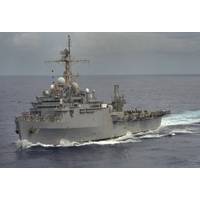
Ex-USS Denver Served Until Sunk
and services that could potentially help sailors carry out the repairs needed to keep them underway.During the SINKEX, Denver was pummeled from land, sea and air. A U.S. Third Fleet press release said, “F/A-18 Hornets from Marine Fighter Attack Squadron 232 (VMFA-232), Marine Air-Ground Task Force 7 (MAGTF-7) used Joint Direct Attack Munitions (JDAMs) against a ship, the ex-USS Denver (LPD 9), during a sinking exercise (SINKEX) as part of Exercise Rim of the Pacific (RIMPAC) 2022. VMFA-232 coordinated the strike against the environmentally clean, decommissioned naval vessel in cooperation

Modeling Shows How Nuclear War Would Devastate the World’s Oceans
low.Even a more limited conflict could push our oceans into a fundamentally new state that lasts much, much longer than we would have expected. Understanding the length, and the weight, of these timescales should be forefront in our calculus of ongoing diplomacy.A Mark 7 nuclear weapon at the US Air Force museum in Dayton, Ohio. Creative CommonsThe authorsTyler Rohr, Lecturer in Southern Ocean Biogeochemical Modelling, IMAS, University of TasmaniaCheryl Harrison, Assistant professor in oceanography and coastal sciences, Louisiana State UniversityKim Scherrer, Postdoctoral fellow at the department
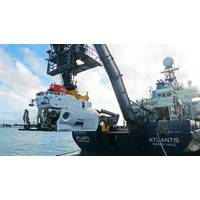
Carderock Engineer Supports Stability Tests for Deep Submergence Vehicle
world’s first deep-ocean submersibles, is a unique state-of-the-art vessel capable of submerging to thousands of meters underwater. It was launched in 1964 and has been involved with several historic events. For example, in March 1966, it supported recovering a hydrogen bomb lost by the U.S. Air Force off Palomares, Spain, and in September 1968, it recovered a F6F Hellcat lost in training during World War II. The submersible has also been utilized to study black smokers, which are chimneys or underwater volcanos formed from deposits of iron sulfide, around the Galapagos Islands to investigate

David Kennedy Designated as Chair of US Arctic Research Commission
years of experience and leadership in science, research, environmental management, and development of legislation and national initiatives. A native of Oskaloosa, Iowa, he received a bachelor’s degree in anthropology from the University of Northern Colorado, and then spent six years as a U.S. Air Force pilot based in Alaska. He subsequently worked at the University of Alaska’s Geophysical Institute in Fairbanks as the Research Facilities Director, and later the Director of the Spilled Oil Research Team focusing on Arctic pollution issues.This led to a 30-year career at the National Oceanographic
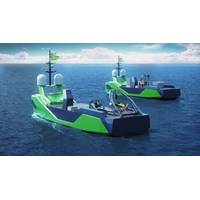
Autonomy: Inside the Building of Ocean Infinity’s Armada Fleet
center (ROC). The first has Ocean Infinity working with various data management providers and software companies to ensure data quality, with pre-processing offshore so not all raw data needs to be sent to shore. Cyber security comes into this and the company has employed experts, including an ex-US Air Force cyber expert, and has designed the vessels from the outset with cyber security in mind.“In the next few years we would expect our road map to take us to one mariner supervising two of these vessels or maybe even three.”Michael King, Business Development Manager at Ocean InfinityThen

Measuring the Hostile Ocean Beneath Hurricanes
by parachute from aircraft. When hurricane Michael entered the Gulf of Mexico in October 2018, three EM-APEX floats were launched into its path by a research team led by Professor Nick Shay (University of Miami). Air deployment was from a USAF WC-130J Hercules aircraft operating from the Keesler Air Force base; these planes are modified for collecting weather information in hurricanes. Several US government agencies that monitor and predict hurricanes helped with the air deployment. Teledyne Marine provided hosting services for all data transmitted from the deployed floats, as well as other technical
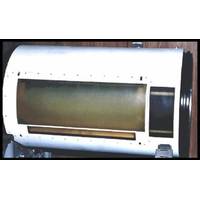
#Oi2020 History
to four times that possible with conventional imaging systems. Cmdr. Whitten and 16 scientists and engineers from the Navy's Coastal Systems Station accompanying and operating the equipment when it arrives in Canada. The system consists of more than 54,000 lbs. of gear and requires two U.S. Air Force C-17s to carry it and its accompanying personnel to Halifax. Marine Technology Reporter has been commissioned to publish the Official “Oceanology International 50th Anniversary Edition” which will distribute with the MARCH 2020 edition of MTR. For information on advertising
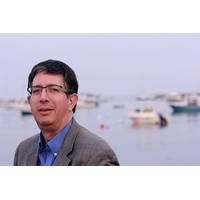
NOAA Names Pentony Atlantic Fisheries Administrator
. He has a Bachelor of Science in Engineering from Duke University in North Carolina, and a Master’s of Environmental Management from the Nicholas School of the Environment at Duke University. Between college and graduate school, Pentony served for six years as an officer in the U.S. Air Force as an engineering project manager on a variety of military satellite and launch vehicle programs



 February 2024
February 2024





